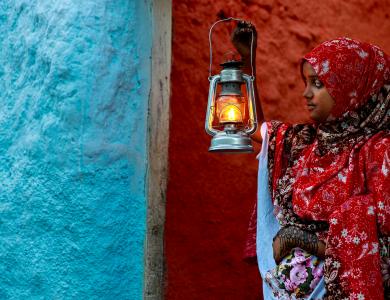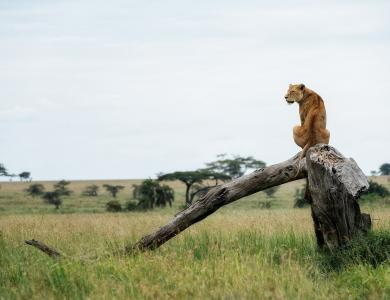
This vixen’s arresting expression in this image caught the World Photography Organisation team’s imagination when it was shortlisted in last year’s Sony World Photography Awards. Encapsulating what the Open competition is all about – rewarding strong, spectacular single images, it’s a picture we keep enjoying. Here Marleen van Eijk tells us more about her super shot.
'Sometimes I waited for hours – or even all day – and saw nothing. I was well practiced in being patient.'
From the first time I saw a fox while walking in my local dunes, I fell in love with these beautiful, clever, red haired beauties. I have to admit though, foxes are a lot smaller than I thought. A lot of my photographs of the animal may make them look bigger as I like to get a low point of view. I like to connect at eye level and show my subject’s world to help tell their story. I started taking pictures six years ago with a bridge camera and I’m still very happy with it. I don’t have to carry loose heavy lenses, and changing lenses – from macro to wide angle – it’s easy. My camera and backpack are my go to buddies when I have a day off and feel like an adventure.
Foxes and people are connected. Where people live there’s always food (garbage). That’s why you can find foxes close to camp sites, beach houses, farms. A friend living in Greece told me they once saw a fox drinking from their swimming pool! Not everybody is happy with foxes roaming around their living areas, especially those who have chickens!
I like to observe foxes in their natural surroundings, like in the dunes, or in the harbor between the rocks and the sea. Their coat is most beautiful in autumn and winter – less during summer when the vixen are feeding their cubs. I know where they hide, where they have dens and where they raise their cubs with great care.
One day I heard about a family of foxes in the harbor of IJmuiden [in North Holland] and went there several times to find out where and at what time they appear. They came out mostly in the late afternoon. Sometimes I waited for hours – or even all day – and saw nothing. I was well practiced in being patient.
The vixen in this photograph was young and curious, her family had lived there for several years. The particular day I took this shot, in November 2019, the weather was changing. I saw dark clouds coming. A few photographers were waiting for the fox to come. The light was beautiful with great contrasts in the clouds as she walked down heading for the water, with the sun setting.
I had chosen my favourite viewpoint and I was lying almost in the water. It seemed as if she was suffering under the dark clouds. My low position and patience were rewarded when she walked right in front of me. The light was great. I opted for setting my Sony RX10 M4 bridge camera’s ISO to 400, having an aperture of f/3.2, a shutter speed of 1/2500 plus a wide angle focal length of 31mm. Lying in the wet sand on my stomach I saw a perfect picture when I looked through the viewfinder. I clicked the shutter.
There was something mysterious about the whole shot: the wide angle, the light, the rocks. When I posted my picture on Facebook and Instagram I was delighted when I received a lot of positive feedback. A friend suggested I should submit the image to the Sony World Photography Awards Open Competition. Actually I never normally enter competitions but I submitted it to the Awards’ Natural World & Wildlife category and totally forgot about it.
I was really astonished when I received an email in January telling me that this picture was chosen for the Open Competition shortlist and was also shortlisted for the Alpha Female Award! I was so pleased when it was then chosen as the front cover image for the German photography magazine Foto. It meant a lot to me and I felt thankful as it was a chance to reach the wider public.
With its focus and soft light, this picture fits into my style of taking pictures. It tells a story of a fox, surviving in this country, living close to people. On my Instagram and Facebook profiles (see below) you can find photographs of foxes, birds, squirrels and other animals.



